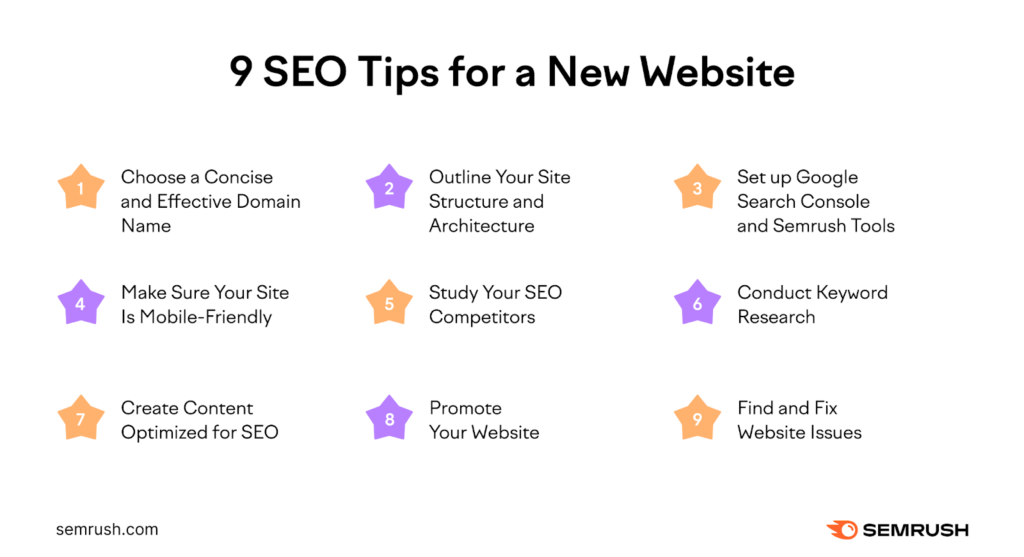Introduction
Search Engine Optimization (SEO) is a crucial aspect of any successful blogging strategy. By optimizing your blog for search engines, you can increase your visibility, attract more traffic, and ultimately grow your audience. In this guide, we’ll take a closer look at the top 10 tips and tools for optimizing your Indian blog for search engines.
1. Keyword Research
Keyword research is the foundation of any successful SEO strategy. By identifying the right keywords, you can ensure that your blog is optimized for the terms that your target audience is searching for. To conduct keyword research, you can use tools like Google Keyword Planner, SEMrush, and Ahrefs. These tools can help you identify the most popular keywords in your niche, as well as their search volume and competition.
2. On-Page SEO
On-page SEO refers to the optimization of individual pages on your blog. This includes things like your title tags, meta descriptions, and header tags. To optimize your pages for search engines, make sure to include your target keywords in these elements. Additionally, make sure that your content is well-written, informative, and engaging. This will not only help with search engine rankings, but it will also help to keep your readers on your site longer.
3. Content Quality
Content quality is a critical factor in SEO. Search engines prioritize high-quality content that is relevant to their users. To ensure that your content is of the highest quality, make sure to conduct thorough research, use proper grammar and spelling, and include relevant images and videos. Additionally, make sure to update your content regularly to keep it fresh and relevant.
4. Mobile Optimization
Mobile optimization is becoming increasingly important in SEO. With more and more people accessing the internet on their mobile devices, it’s essential to ensure that your blog is optimized for mobile. This includes things like using responsive design, optimizing images for mobile, and making sure that your content is easy to read on smaller screens.
5. Site Speed
Site speed is another critical factor in SEO. Slow-loading sites can lead to a poor user experience, which can negatively impact your search engine rankings. To ensure that your site loads quickly, make sure to optimize your images, use a content delivery network (CDN), and minimize the number of plugins and scripts on your site.
6. Backlinks
Backlinks are links from other websites to your blog. They are an important factor in SEO because they indicate to search engines that your content is valuable and relevant. To build backlinks, you can reach out to other bloggers and website owners in your niche and ask them to link to your content. Additionally, you can create high-quality content that is likely to be shared and linked to naturally.
7. Social Media
Social media can be a powerful tool for driving traffic to your blog and improving your search engine rankings. By sharing your content on social media, you can increase its visibility and reach a wider audience. Additionally, social media signals like shares and likes can indicate to search engines that your content is valuable and relevant.
8. Analytics
Analytics are essential for tracking your SEO performance and making data-driven decisions. By using tools like Google Analytics and Google Search Console, you can track your traffic, keywords, and search engine rankings. This can help you identify what’s working and what’s not, and make adjustments to your SEO strategy accordingly.
9. Local SEO
Local SEO is particularly important for Indian blogs that are targeting a local audience. This includes things like optimizing your site for local keywords, creating a Google My Business listing, and building local citations. By optimizing your site for local search, you can increase your visibility and attract more targeted traffic.
10. Tools
There are a variety of tools available for optimizing your Indian blog for search engines. Some of the most popular include:
* Google Keyword Planner: a free tool for conducting keyword research
* SEMrush: a paid tool for keyword research, competitor analysis, and site audits
* Ahrefs: a paid tool for keyword research, backlink analysis, and site audits
* Yoast SEO: a free plugin for optimizing your WordPress site for search engines
* Google Analytics: a free tool for tracking your traffic and analytics
* Google Search Console: a free tool for tracking your search engine rankings and performance
Conclusion
SEO is a complex and ever-changing field, but by following these tips and using these tools, you can optimize your Indian blog for search engines and increase your visibility and traffic. Remember to focus on quality content, mobile optimization, site speed, backlinks, social media, analytics, local SEO, and the right tools, and you’ll be well on your way to SEO success.
Additionally, it’s important to stay up-to-date with the latest SEO trends and best practices. By keeping up with the latest developments in the field, you can ensure that your blog remains optimized for search engines and continues to attract traffic and grow your audience.
Finally, remember that SEO is a long-term strategy. It can take time to see results, but with patience, persistence, and the right approach, you can achieve SEO success for your Indian blog.
Read more on Amazing Facts & Top 10:
- Get More Facts on our Website
- Tech Titans: Unveiling the Secrets Behind Silicon Valley’s Giants
- 10 Customized GPT Models That Improve ChatGPT’s Performance
- Unlocking the Mysteries: 20 Amazing Human Body Facts You Won’t Believe Are True
- Top 13 Famous Indian Bloggers with Highest Income in 2024
- 15 Amazing Facts About Human Behavior You Must Know
- India’s Top 10 Most Subscribed YouTube Channels in 2024
- 50 Amazing Facts You Didn’t Know About the World
- The Ultimate Guide to SEO for Indian Blogs: 10 Tips and Tools
- The Top 10 Indian Celebrity News Blogs: Ranking and Analysis
- The Top 10 Indian Travel Blogs: Destinations, Tips, and Tales
- The Top 10 Indian Fashion Blogs: Trends, Style, and Inspiration
- The Top 10 Indian Fitness Blogs: Workouts, Nutrition, and Motivation
- Top 10 Fascinating Facts About Digital Marketing
- Unveiling 10 Mind-Blowing AI Innovations in Tech
- Top 10 Best Indian Politicians in 2024
- Revolutionizing AI Interactions: OpenAI Unveils GPT-0, Elevating ChatGPT’s Capabilities Across Text, Visual, and Audio Dimensions
- OpenAI Unveils GPT-4O: A Groundbreaking Multimodal AI Model
- The Best iPads of 2024
- 32 Amazing Facts About India You Probably Don’t Know Yet
- 10 Surprising Benefits of Minimalist Living in 2024
- 10 Unbelievable Science Facts That Will Blow Your Mind
- Fun Facts About Penguins: Nature’s Adorable Birds
- The Top 10 Indian Food Blogs: Recipes, Reviews, and Rankings
- Weird Facts About the Human Body You Never Knew
- Interesting Facts About Life That Will Change Your Perspective
- Tesla Robotaxi: The Future of Autonomous Rides in 2024
- Top 10 Must-Read Books of 2024
- Top 10 Healthy Recipes for Busy Families
- Top 10 Travel Destinations in the USA for 2024
- Top 10 Tech Gadgets You Can’t Live Without
- Top 10 Movies to Watch This Fall
- Top 10 Fitness Trends to Try This Year
- Top 10 Most Influential Women in Business
- Top 10 Tips for First-Time Home Buyers
- Top 10 Historical Sites to Visit in the USA
- Top 10 Ways to Save Money on Groceries
- Top 10 Podcasts You Should Be Listening To



